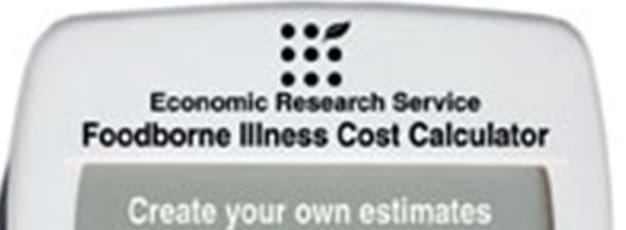Calculating the Cost of Foodborne Illness: A New Tool to Value Food Safety Risks

Seventy-six million Americans fall ill each year from eating foods contaminated with bacteria, viruses, and parasites. If you have ever been one of them, you are acquainted with some of the costs these diseases inflict. Discomfort, pain, time lost from normal activities, forgone earnings, spending on medications, long-term medical treatment, and even death are all among the possible consequences of foodborne illness. Possible financial costs can run to millions of dollars.
ERS researchers have estimated the costs of illness and premature death for a number of foodborne illnesses. For example, ERS estimates the annual U.S. economic costs due to foodborne Salmonella infections at $2.4 billion. Policymakers use such estimates to help them rank risks, focus policy, and prioritize spending. The ERS estimates, like all cost-of-illness estimates, include assumptions about disease incidence, the severity of the illness, and the costs incurred for medical care, lost productivity, and so on. Changes to any of these assumptions change the cost estimates and, as a result, could change risk rankings, spending priorities, and food safety policies.
To provide policymakers and others with information on the assumptions behind foodborne illness cost estimates—and to give them a chance to make their own assumptions and calculate their own cost estimates—economists at ERS have developed a web-based 'Foodborne Illness Cost Calculator.' The Calculator currently describes the assumptions and calculations behind the ERS cost estimates for one foodborne pathogen, Salmonella. (Four more pathogens—E. coli O157, E. coli non-O157 STEC, Listeria, and Campylobacter—will be added later.) The Calculator also describes alternative epidemiological and cost assumptions, including those used by the Environmental Protection Agency and the Food and Drug Administration when they calculate illness costs for policy analyses.
The Calculator allows users to create their own cost estimates by changing the ERS assumptions and to examine the impact that different assumptions have on cost estimates and risk rankings. Calculator users can change assumptions to reflect any specific information they may have about disease incidence, medical costs, productivity losses, or other costs. By changing the assumption about the number of cases, users can calculate the costs of foodborne illness for a particular State or region, or for a particular foodborne illness outbreak. A user could even calculate his or her own potential costs from a bout of foodborne illness.

